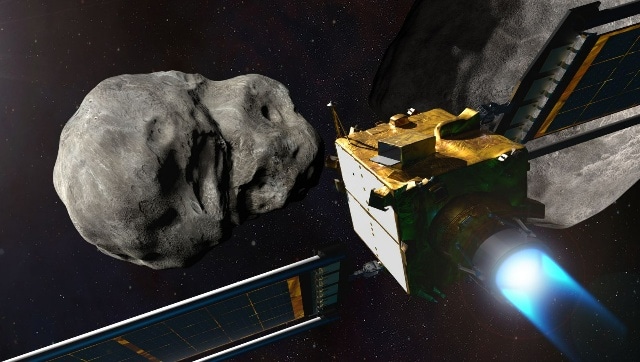For years now, scientists from around the world have been working on a number of ways on how to change the trajectory of an asteroid or any interstellar body heading towards the earth, that has the potential to wipe life off the planet.
On Monday, NASA will broadcast its first attempt to modify the orbit of an asteroid, a capability that will be essential if we detect an asteroid that poses a threat of colliding with Earth.

The entire operation focuses on whether or not DART, a new system of using spacecraft to alter the course of an asteroid works as engineers and scientists at NASA hope.
DART stands for Double Asteroid Redirection Test and it is a space mission to see if we can place objects in the trajectory of an asteroid or a minor interstellar body and alter its course, if it was heading for the planet Earth.
What is the DART Mission that NASA will be conducting this week?
The mission that NASA will conduct on Monday will target a small asteroid called Dimorphos that orbits the larger 65803 Didymos, forming a binary system. If all goes according to plan, DART will direct itself to a head-on collision that slows Dimorphos, altering its orbit around Didymos.
What sort of spacecraft will this mission use?
The DART spacecraft itself that is being used for this mission is over 600 kg and lacks instruments that you would normally find in a spacecraft. Its solar panels include an experimental concentrating solar cell that occupies less space to generate the same amount of power as existing space-based hardware, and its main transmitter is testing a new antenna configuration.
The most important piece of equipment on DART spacecraft is the single camera, the Didymos Reconnaissance and Asteroid Camera for Optical navigation, or DRACO, a 2,560×2,160-pixel camera. DRACO and the transmission hardware are capable of sending an image back to Earth every second.

How the DART mission is supposed to unfold?
During its final approach to Dimorphos, DART will be distant enough that round-trip transmissions will take over a minute. As such, the final approach and targeting of the asteroid will be handled by an on-board navigation system called SMART Nav (Small-body Maneuvering Autonomous Real-Time Navigation).
Once the DART spacecraft is close enough to Dimorphos, the SMART Nav will track the larger Didymos and use that for navigation until about 50 minutes before its collision with Dimorphos. Up until 2.5 minutes before the collision, the DART spacecraft will stay on course using its internal ion engines.
At 2.5 minutes prior to the collision, the ion engine will be shut off, and DART will coast into a collision at about 6 kilometres a second. Even though Dimorphos is only about 120 meters across, at this point, it should completely fill the view from DRACO.
We will know that the collision was successful if we stop receiving images or when the transmission stops. DART is being accompanied by a small craft called LICIACube, built by the Italian Space Agency. It was released from DART in early September and is on a course that will take it past Dimorphos about three minutes after the impact. LICIACube has two cameras (wide and narrow fields, one of which carries RGB colour filters) and will capture images of the asteroid as well as any material ejected by the impact.
However, it may take NASA several months to know whether the mission was successful or not, before they can ascertain for sure that Dimorphos’ orbit was successfully modified.
What happens if the mission is successful?
If the mission is successful, NASA hopes to launch several more of these DART spacecrafts and modules towards sizeable asteroids that we know are coming towards the Earth, especially if we know for sure that there will be a collision.
NASA plans to launch these DART spacecrafts at least 10 years or more in advance to give it time to shift to a less-threatening orbit. Having a method that has been successfully demonstrated to do so will be a major step forward for NASA’s planetary defence programs.
from Firstpost Tech Latest News https://ift.tt/4UM8gtE

No comments:
Post a Comment
please do not enter any spam link in the comment box.